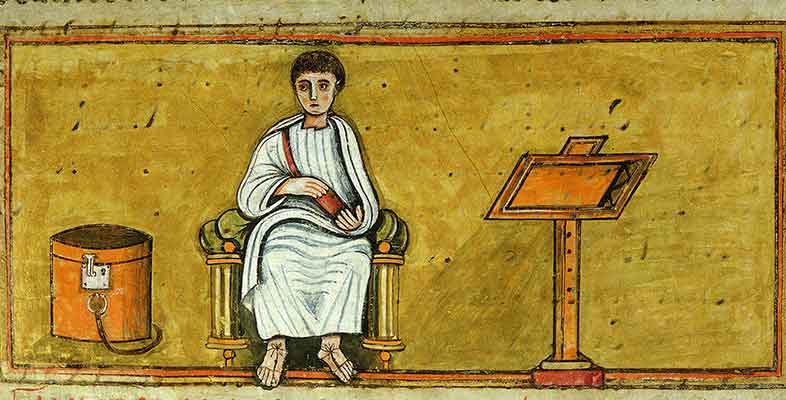3.2 Learning to pronounce Latin
Most students find that they master the principles of pronouncing Latin easily enough, though it can take a little patience and practice. Unlike with modern languages, there is no pressure to develop an ‘authentic’ Latin accent. However, being able to pronounce Latin consistently will ultimately allow you to absorb Latin vocabulary more quickly, read more fluently and appreciate the rhythms and sounds of Latin poetry and prose that much better.
Activity 4
To learn how Latin is pronounced, visit the ‘Sounds’ section of the Introducing Classical Latin [Tip: hold Ctrl and click a link to open it in a new tab. (Hide tip)] website, produced by The Open University. You should set aside around an hour to work through this section of the site. (If you have studied some Latin before, you may find browsing this section of the website a useful way of refreshing your memory.)
To begin to acquire some basic Latin vocabulary, you may also like to look at the ‘Words’ section of the Introducing Classical Latin site. (But note that you will be prompted to revisit the site later, both to look at the ‘Words’ section again – and also to work through the ‘Sentences’ section, which you should leave to one side for now.)
In line with the ‘little and often’ approach that you are advised to adopt for learning Latin, you may wish to break down your time working on the ‘Sounds’ and ‘Words’ sections into small chunks of 10–20 minutes. You will no doubt also find it useful to revisit the Introducing Classical Latin website again after a few days, too, to review what you have learnt: consolidation and practice are key when it comes to making languages stick!
You will notice that, some letters on the Introducing Classical Latin site are marked with short lines over the top; these are called ‘macra’ (singular: macron) and they mark the difference between ‘short’ and ‘long’ vowels. (You can hear the difference between the length of vowels when you work through the section on the ‘Sounds’ of the Latin alphabet.) Macra can be useful when learning how to pronounce Latin words, but since most printed versions of Latin texts do not use them, we’ve chosen not to include them in this OpenLearn course.
